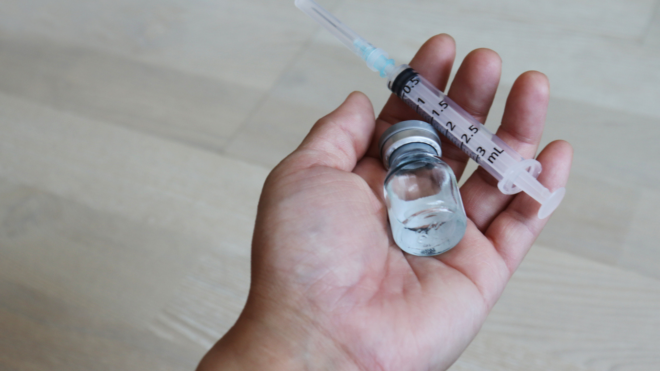
When it comes to diets that promise quick weight loss, new moms are generally all ears. Lately, the keto diet has been getting lots of press. A diverse group of celebrities — from LeBron James to Halle Berry to Vinny from Jersey Shore — have tried it and touted its benefits. But what is it and how does it work? Here’s a basic rundown of what the keto diet is, whether it’s safe for new moms, and how to follow it.
What’s the Keto Diet?
While the keto diet might seem like the newest It Diet, it has actually existed for many years. It was actually originally created in the 1920s to help treat people with epilepsy. The keto plan promotes high fat intake, moderate amounts of protein, and very few carbs. This is because your body usually depends on carbohydrates to burn as energy for your brain, muscles, and organs. When you drastically decrease the percentage of calories that come from carbs your body instead burns fat molecules for energy. This puts your body in a state called “ketosis,” which for many people translates to relatively effortless weight loss.
The keto diet recommendation is that 75 percent of your daily calories come from fat, 20 percent from protein, and 5 percent from carbs. (For reference, a standard suggested diet consists of 20 to 35 percent fat, 10 to 35 percent protein, and 45 to 65 percent carbs.) If you’re eating 2,000 calories in a day, which is generally around the amount that the average woman requires, this means that you’d be allotted just 25 grams of carbohydrates — in other words, about one medium banana, one apple, one sweet potato, two slices of bread, half a Snickers bar, or an ounce and a half of tortilla chips.

Can I do Keto While Breastfeeding?
For many new moms, the big question is whether it’s safe to do the keto diet while breastfeeding. While there isn’t clear evidence to suggest otherwise, there also hasn’t been much research on the topic in general. Breastmilk is already very high in fat, which suggest that newborns are naturally adapted to a keto-like diet. It’s still important to try to get a range of nutrients, though, and make sure you’re eating enough calories to sustain you and your baby. Since the keto diet can be very satiating, this might not happen as naturally as you’d think. Talking to a registered dietitian about what your meal plan looks like is a good idea, just to be on the safe side. Ketosis can also make you dehydrated, so you’ll need to pay extra attention to getting enough water in. The general recommendation for breastfeeding moms is at least 13 cups a day. To be safe, we recommend you always consult your doctor before trying a new diet, especially if you’re breastfeeding.
What are the Risks and Benefits of the Keto Diet?
Part of the reason the keto diet works is that in addition to causing your body to burn significant amounts of fat, the foods you are allowed to eat on it are very satiating. This keeps you from feeling too hungry, as other diets often do. Weight loss isn’t the only benefit of the keto diet, though. The plan can help your ability to focus, increase your HDL (good) cholesterol, and decrease your blood pressure. You’ll also naturally find yourself eating fewer processed and packaged foods.
There are some definite risks and drawbacks to going keto, as well, however — especially for new moms. During the first few days off carbs, many people feel nauseous, headachy, and fatigued, which is known as the keto flu. Even though your body will transition to using fat for energy soon (usually within two to five days), for a new mom, being more tired than usual, even just for a few days, can be rough. Your breath might start to smell bad due to the acetone in your body that’s produced by ketones, and eating less fruits, veggies and grains makes many people constipated. And it’s tough in general for people to get the range and variety of nutrients that your body is used to if you’re getting so many of your calories from fat. And as any mom knows, we need all the nutrients and energy we can get!

What Foods Should I Eat on the Keto Diet?
Even though the keto diet requires you to intake much more fat than you usually would, you still want to keep your trans fats and saturated fats to a minimum. No more than 10 percent of your daily calories should come from saturated fat, so (sorry!) that doesn’t mean you have totally free license to consume ice cream, butter, and red meat. Unsaturated fats like olive oil, fish, nuts, seed, and avocado are better choices. It’s also important that you continue to get enough fiber, which becomes more challenging on a diet low in produce and grains. When you do eat carbs, then, choose ones that are high in fiber like salad — not cookies. Coconut milk, eggs, full-fat cheese and milk, non-starchy veggies, and meat are also good keto choices. Your intake of grains, fruit, beans, potatoes, and sugar, on the other hand, should be very limited while on keto. If your doctor gives you the go-ahead to try the keto diet, there are resources available to help you plan meals and snacks, track what you’re eating, and more. One of our favorites is Noom, a program that offers, among other services, access to health and wellness coaches who can give you real-time advice and support. They have nutritionists available to users 24/7, who can help you to figure out how to make the keto diet work for you.



